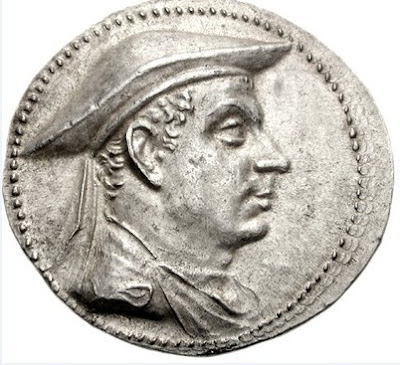So, what is a Basque beret? I would say a reasonable definition would be something along these lines: a beret is a hat made of one piece of knitted wool in a circular shape which is felted and shrunk after the initial manufacturing (knitting and closing) is completed, with the remainder of the closing thread (the 'txortena', or 'wick') kept in place.
Of course, there are a number of variants: the military beret with has the txortena cut off (apart from a small number of regiments like the Chasseurs Alpins and the Chasseurs Ardennais), the cotton beret (which is manufactured in the same way, except -obviously- from the felting and some hybrid berets like the 1940's and '50's made Czechoslovak berets and French berets with a peak.
A pakol is not a beret, although it shares many similarities in material, manufacturing and looks. I have written about pakols before (here) and said then that it's origins lie in Chitral and Gilgit, in Northern Pakistan. That may be right for 'living memory', but it's real origins are actually in ancient Greece, or more factual Macedonia!
From Wikipedia I quote: A kausia was an ancient Macedonian flat hat which was worn during the Hellenistic period but perhaps even before the time of Alexander the Great and was also used in lion hunting and as a protection against the sun by the poorer classes in Rome.
Depictions of the kausia can be found on a variety of coins and statues found from the Mediterranean to the Greco-Bactrian kingdom and the Indo-Greeks in northwestern India. A modern descendant of the hat may be the pakol, a men's hat from the mountains of Afghanistan and Pakistan.








No comments:
Post a Comment